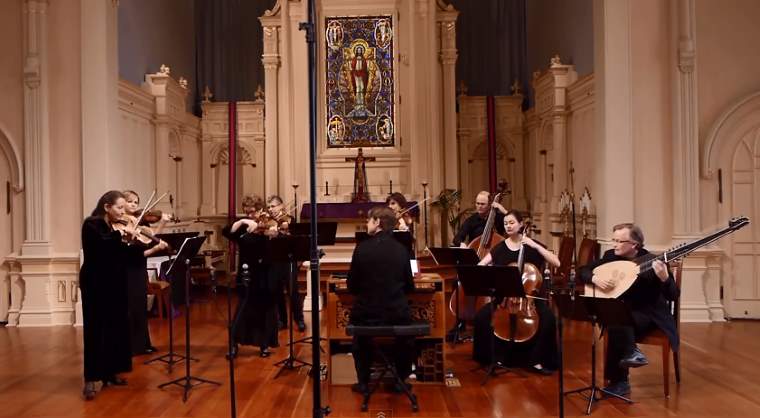Award-winning early music ensemble Voices of Music presents “La Follia: A Baroque Pageant”, a beautiful performance of the 12th of Antonio Vivaldi’s Twelve Trio Sonatas, Op. 1. Sonata No. 12 in D minor “La Follia”, RV 63.
Choreographed and danced by baroque dancers Robin Gilbert and Carlos Fittante.
In 1705, eager to make his mark as a composer of both opera and instrumental music, the young Vivaldi published his first set of twelve trio sonatas as Opus 1. The last sonata, which is a highly virtuosic set of variations on the “La Follia” dance pattern (titled only “Follia” in the print), is one of his most famous works; Vivaldi takes Corelli’s variations on the same theme and bass pattern from Corelli’s Opus 5 (1700), which was already a famous work, and adds figuration of even greater complexity.
Choreography:
Carlos Fittante
Dancers:
Robin Gilbert
Carlos Fittante
Costumes:
Carlos Fittante
Stephen Campos
Masks:
Jane Stein
Based on the Baroque originals
carved by Renu of Singapadu, Bali, Indonesia
The Musicians and their Instruments
- Carla Moore, baroque violin by Johann Georg Thir, Vienna, Austria, 1754
- Katherine Kyme, baroque violin by Johann Gottlob Pfretzichner, Mittenwald, 1791
- William Skeen, five-string baroque cello, Anonymous, Italy, c1680
- David Tayler, baroque guitar by John Rollins, after Jean Voboam, Paris, 1687
- Hanneke van Proosdij, harpsichord by Joop Klinkhamer, Amsterdam (1996), after Ruckers-Goujon, Neuchâtel, Switzerland
- Lid painting by Millicent Tomkins, Marin, 2012.
La Follia
La Folía (Spanish), also folies d’Espagne (French), Follies of Spain (English), or Follia (Italian), is one of the oldest European musical themes, or primary material, generally melodic, of a composition, on record. The theme exists in two versions, referred to as early and late folias, the earlier being faster.
Western classical music features both an “early Folia”, which can take different shapes, and the better-known “later Folia” (also known as “Follia” with double l in Italy, “Folies d’Espagne” in France, and “Faronel’s Ground” in England).

Sources
- Folia on Wikipedia


